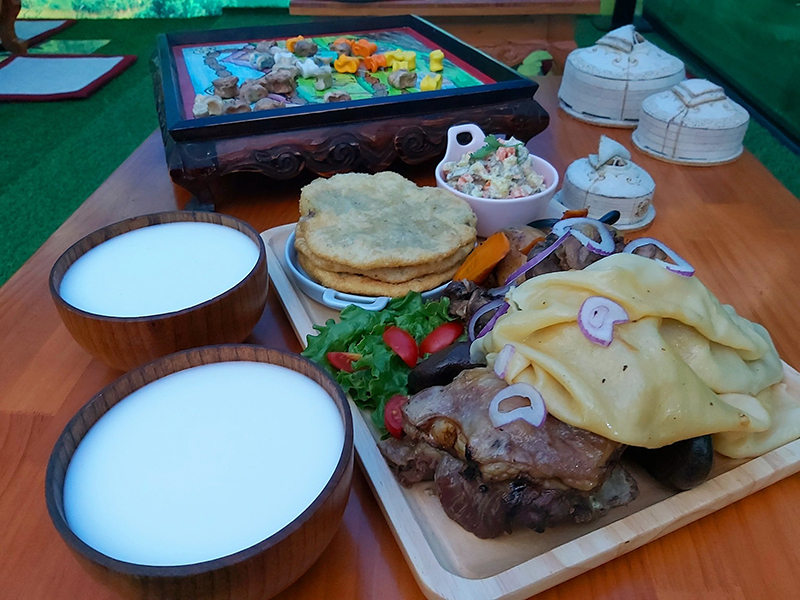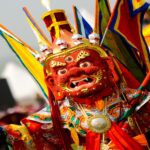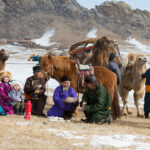Now Reading: Exploring Mongolian Food: A Culinary Journey Through the Land of Nomads
-
01
Exploring Mongolian Food: A Culinary Journey Through the Land of Nomads
Exploring Mongolian Food: A Culinary Journey Through the Land of Nomads

Mongolia, a country known for its vast steppes, nomadic culture, and rich history, offers a unique culinary experience that reflects its environment, traditions, and lifestyle. Mongolian food is hearty, flavorful, and deeply tied to the country’s nomadic heritage, where ingredients are simple yet satisfying, designed to nourish during the harsh winters and long journeys across the steppe. In this article, we will explore the most iconic Mongolian dishes, traditional cooking methods, and the cultural significance of food in Mongolia.
The Heart of Mongolian Cuisine
Mongolian cuisine is heavily influenced by the country’s geography and climate. With long, cold winters and limited arable land, Mongolians traditionally rely on livestock for food. Meat and dairy are central to their diet, while vegetables and grains play a smaller role. Common meats include mutton, beef, goat, horse, and camel, often prepared in simple yet flavorful ways.
Staple Ingredients in Mongolian Food
- Meat: Meat is the cornerstone of Mongolian cuisine. Mutton is especially popular, while beef and goat are also common. Horse meat, though unusual to outsiders, is a traditional and nutritious part of the diet.
- Dairy: Dairy products, including milk, yogurt, cheese, and fermented beverages like airag (fermented mare’s milk), are staples. These foods are often consumed fresh or used in cooking.
- Flour and Grains: Wheat flour is commonly used to make noodles, dumplings, and bread. Barley is also grown and incorporated into soups and porridges.
- Vegetables and Herbs: Vegetables are less prominent due to the harsh climate, but onions, garlic, carrots, and potatoes are often used. Herbs and spices are used sparingly.
Iconic Mongolian Dishes
1. Buuz
Buuz are traditional Mongolian steamed dumplings filled with minced meat, usually mutton or beef, and flavored with onion, garlic, and black pepper. They are especially popular during the Lunar New Year celebration, Tsagaan Sar. Buuz are steamed until tender, creating a juicy, flavorful filling inside a soft dough shell.
2. Khuushuur
Khuushuur is a deep-fried meat pastry, similar to a meat pie. It is crispy on the outside and packed with seasoned meat on the inside. Khuushuur is often enjoyed as a snack or served at festivals and gatherings.
3. Boodog
Boodog is one of Mongolia’s most unique cooking methods. Meat, often goat or marmot, is cooked from the inside out using hot stones placed inside the animal’s body cavity. The result is incredibly tender, flavorful meat with a smoky aroma. Boodog is traditionally prepared during special occasions and communal feasts.
4. Tsuivan
Tsuivan is a comforting noodle dish made with hand-pulled noodles, stir-fried meat, and vegetables. The dish is hearty and often served during family meals. It showcases the Mongolian preference for simple, nourishing, and filling foods.
5. Airag and Traditional Beverages
Airag, or fermented mare’s milk, is a slightly alcoholic beverage that is a cultural staple in Mongolia. It is light, tangy, and often consumed during social gatherings. Another traditional drink is suutei tsai, a salty milk tea that provides warmth and energy during cold winters.
Cultural Significance of Mongolian Food
Food in Mongolia is more than sustenance—it reflects social bonds, hospitality, and cultural traditions. Sharing a meal is a sign of respect and friendship, and offering dairy or meat to guests is considered a fundamental part of Mongolian hospitality. During festivals and ceremonies, traditional dishes like buuz, khuushuur, and boodog are prepared in abundance to honor guests and family members.
Modern Mongolian Cuisine
While traditional dishes remain central, urban areas in Mongolia are seeing a fusion of international cuisines and modern adaptations of classic recipes. Restaurants in Ulaanbaatar, the capital, offer both authentic Mongolian flavors and creative dishes that blend Asian and European influences. Despite modernization, the essence of Mongolian food—simplicity, quality ingredients, and respect for tradition—remains intact.
Why Mongolian Food is Worth Trying
Mongolian food offers a unique taste of nomadic culture and history. From the rich, savory meat dishes to the tangy fermented beverages, every meal tells a story of resilience, resourcefulness, and connection to the land. Whether you are visiting Mongolia or exploring its cuisine abroad, trying traditional Mongolian dishes is an unforgettable culinary adventure.






